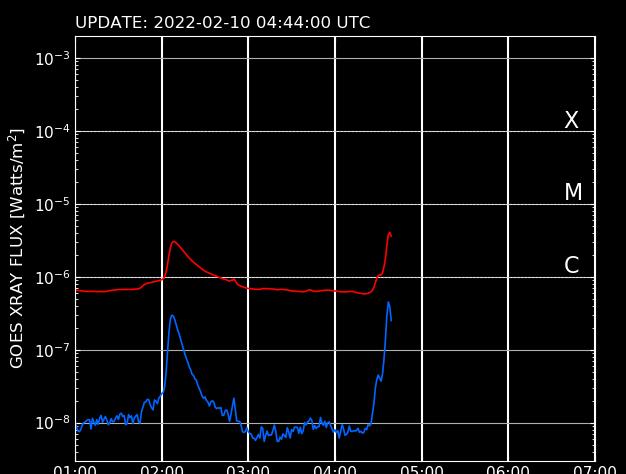#Space Weather Events#
【Occurrence of small solar flare event】
[Solar Flare Event]
++++++++++++++
!! [Yellow] color alert!!
At 12:38 Beijing time on February 10, 2022, a small solar flare event occurred, and its maximum value was C4.0.
illustrate:
B: Minor flares (no effect)
C: Small flares (no effect)
M: Medium flare (has an effect on radio)
X: Big flare (has a big impact on radio)
Related knowledge
Solar flares strongly affect space weather near Earth. The solar wind they can produce can carry high-energy particles, known as solar proton events. These particles can affect Earth's magnetosphere, and the accompanying radiation can harm spacecraft and astronauts. In addition, coronal mass ejections (CMEs) are sometimes accompanied by massive flares that trigger magnetic storms that are known to deactivate satellites in March 1989 and damage Power Networks on Earth for a long period of time.
The soft X-ray flux of X-rated flare radiation increases the ions of the upper atmosphere, which can interfere with short-wave radio communications and heat the outer atmosphere, thereby increasing the damping of low-orbit satellites, causing the orbit to be dragged down and attenuated. Energetic particles in the magnetosphere can trigger the Southern And Northern Lights. Energy from hard X-rays can damage a spacecraft's electronics, and they are generally the result of ejections of large amounts of plasma material from the upper layers of the chromosphere.
The radiation risk of solar flares is a major concern for manned Missions to Mars, the Moon or other planets. High-energy particles can penetrate the human body, causing biochemical damage and causing harm to astronauts in interstellar travel. This requires some form of physical or magnetic mask to protect the astronauts. Most proton storms do not reach Earth orbit until two hours after visual detection. The solar flare of January 20, 2005, which had been directly measured to the most concentrated release of protons, gave the astronauts at least 15 minutes to reach the shelter.
@Astronomy Online @Zero-degree Galaxy
